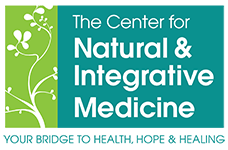 Celiac disease, or celiac sprue, is a disease often diagnosed when a patient’s immune system responds abnormally and negatively to a dietary protein called gluten. This is the reason that you are commonly seeing a new “free” phrase on menus and grocery aisles: Gluten-free. Put simply, “celiac disease is an “immune reaction to eating” gluten, a protein found in wheat, barley and rye.” Today’s blog from the Center For Natural and Integrative Medicine is Part One of our multi-part series, an updated report, concerning this condition.
Celiac disease, or celiac sprue, is a disease often diagnosed when a patient’s immune system responds abnormally and negatively to a dietary protein called gluten. This is the reason that you are commonly seeing a new “free” phrase on menus and grocery aisles: Gluten-free. Put simply, “celiac disease is an “immune reaction to eating” gluten, a protein found in wheat, barley and rye.” Today’s blog from the Center For Natural and Integrative Medicine is Part One of our multi-part series, an updated report, concerning this condition.
The Cycle of Celiac Disease
If a patient with this disease eats gluten, the proteins trigger an immune response in the small intestine. As time goes by, these reactions create inflammation. Damage happens in the lining of the small intestine, and stops the absorption of valuable nutrients. This feature of the disease is termed “malabsorption.” Other signs of this type of intestinal damage include:
1. Weight Loss is a very obvious symptom.
2. Bloating happens, and there might be pain present, particularly immediately after eating.
3. Diarrhea is a common symptom. In detail, the semi-poisonous “effects of gluten cause damage to the microscopic finger-like projections along the surface of the small intestine. It is the blunting of this normal absorptive mechanism that leads to the clinical manifestations of celiac disease…”.
4. Ultimately, the patient is deprived of vital nourishment, injuring the “brain, nervous system, bones, liver and other organs…”
5. In children, malabsorption affects growth and development.
6. Anemia and fatigue go hand-in-glove with this condition.
There are over three million people in the United States who are diagnosed with this illness. Celiac disease does not respect age, status, or gender. It afflicts men, women and children, at any age and is present in most cultures across the globe.
The Gluten-Free Lifestyle
Currently, the most important treatment for Celiac disease is dietary avoidance of the trigger foods! It is not a fad or a trendy diet. A diagnosis requires a special diet of avoiding foods or products with wheat, barley and rye.
We know that foods containing gluten “play a major role in celiac diagnosis and the removal of these foods are most important in the treatment.”
Unfortunately, the above-mentioned grains are not the only places where gluten is commonly found.
It is sometimes found lurking as a hidden ingredient in prepared foods. It can be used as a binder, and found in dietary supplements, cosmetics, and medications.
It might be found in your toothpaste. It might be hiding in your beer.
 This can make it very challenging to avoid eating or contacting gluten.
This can make it very challenging to avoid eating or contacting gluten.
In recent times, celiac disease and its associated gluten-free diet recommendations have received a great deal of public awareness and attention. There is no known, absolute cause for it. Doctors and advocates believe that the causes of this disease include a combination of genetic and environmental factors.
Left untreated, this disease can result in “complications such as other autoimmune diseases, osteoporosis (the thinning of bones,) thyroid disease and infertility. There is even significant proof that this condition can morph into some types of small bowel cancers.”
In updating our research, we found that there is much confusion among people about this disease, because some people do not show a diagnosis on tests as positive for celiac disease, yet they genuinely exhibit systems of sensitivity to gluten.
Indeed, we discovered five different types of gluten sensitivities, only one of which is celiac disease.
You might have a friend or family member with any one of them.
 Next week, we invite you to read this blog again, and in Part Two, we will discuss these types of sensitivities and how they can affect your healthy life choices.
Next week, we invite you to read this blog again, and in Part Two, we will discuss these types of sensitivities and how they can affect your healthy life choices.
In Part Three, we will update information that relates to a treatment option, making fast-breaking news in the research world, and give you some sources for delicious gluten free recipes.
Thank you for reading our blog this week, and we look forward to enriching your knowledge of celiac disease and gluten free lives next week!

